I came across the incredible work of textile artist Liz Alpert Fay on Instagram. It was her unique designs that really caught my eye. Therefore I was particularly excited when Liz Alpert Fay agreed to share more about her amazing textile work. I am looking forward to showcasing what I found out with you and hope it gives you new inspiration. So here goes…
Hi Liz Alpert Fay! Would you mind telling us a little about yourself and your background please?
I have lived in New England all of my life, and as a child was fortunate to have parents who loved the outdoors. Much of our time was spent out in the woods, hiking, canoeing and camping. I was also fortunate to have a grandfather who loved to tell stories and keep our small hands busy with many projects. My grandmother was a very skilled seamstress and kept my sister and I well supplied with beautifully made dresses. These early experiences have all served to influence me as an artist.
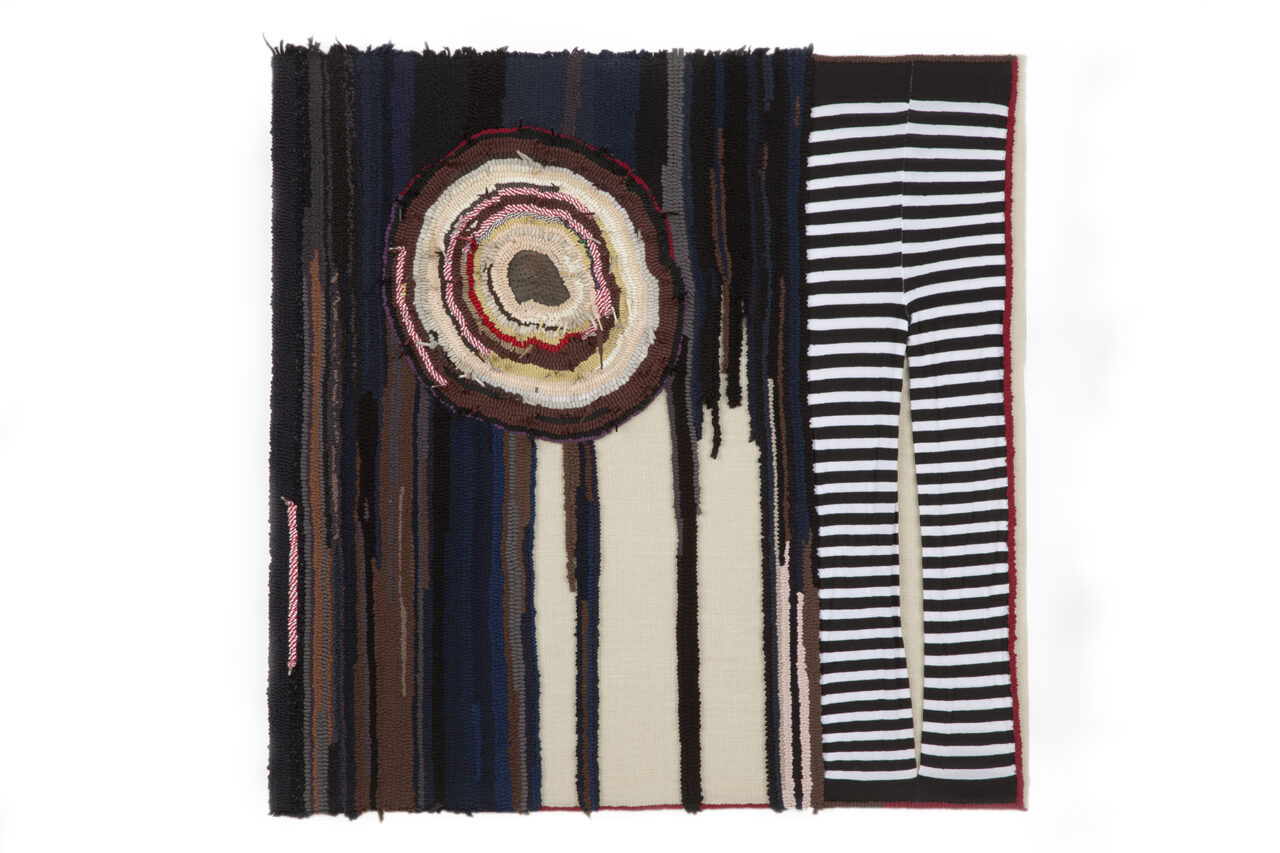
Lost Soul 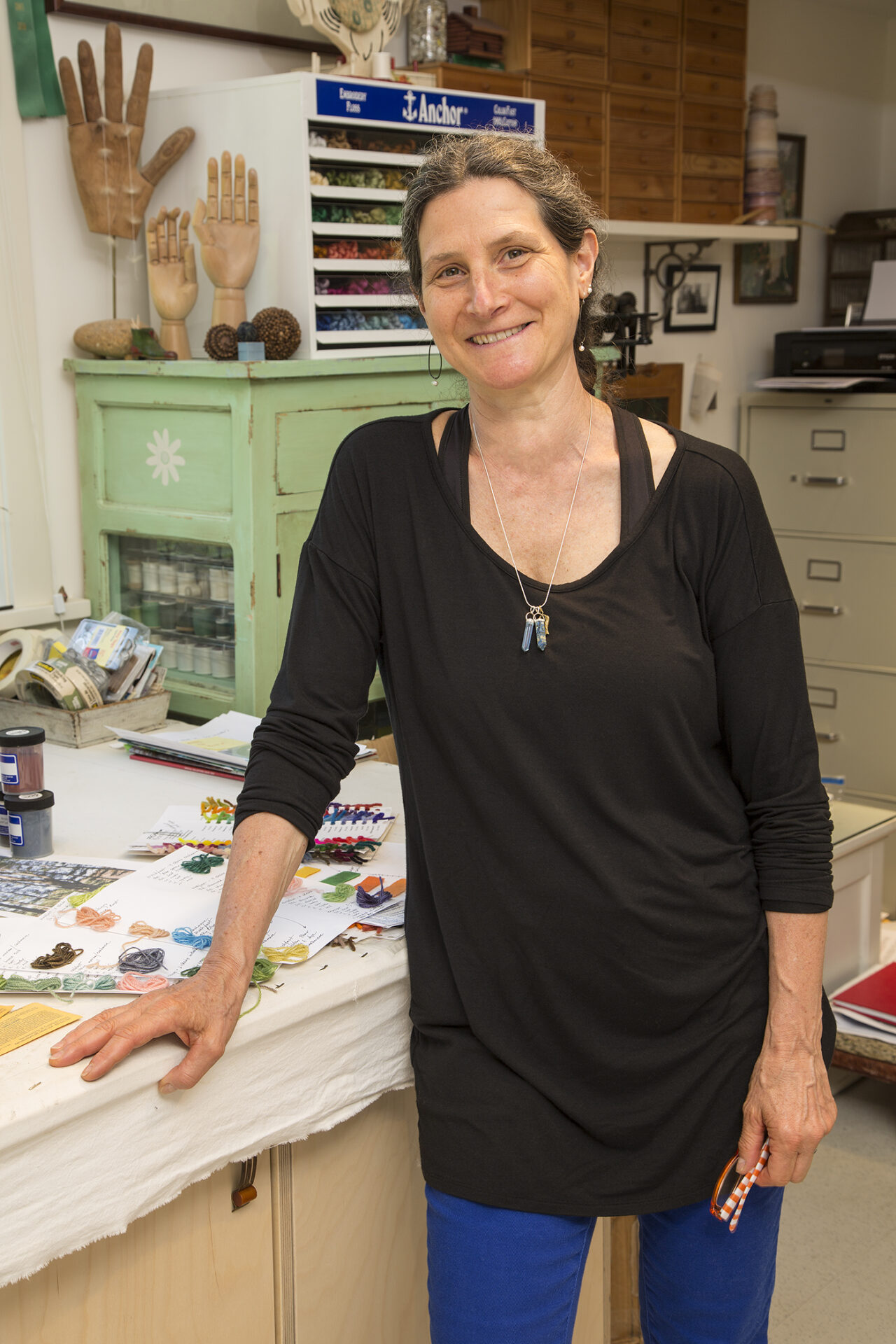
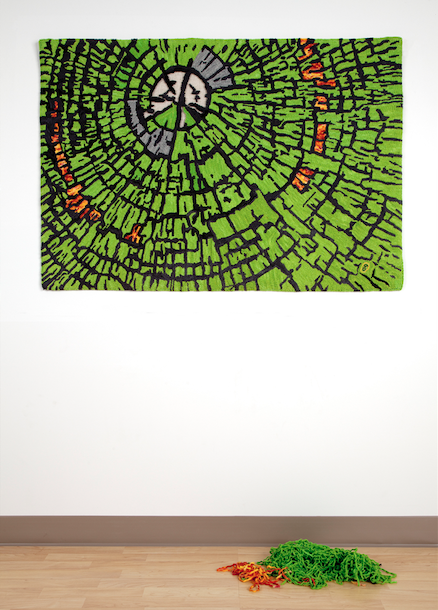
Ring of Fire
How did you get into textiles? Have you always been arty?
I’ve always been curious about how things are made, and have been especially interested in learning about techniques and processes that are not common knowledge, or have fallen out of favour. As a child my parents fostered my creative interests by enrolling me in art classes where we explored the more traditional art forms of painting, drawing and collage.
It wasn’t until high school that I discovered I could teach myself about working with textiles from books. I began saving money from various jobs and bought fabric to make quilts and a spinning wheel to create yarn. Later I purchased a large floor loom and tried to teach myself to weave. As I’ve never been good at math, I found this to be a challenge, and set out to study textiles in college, where I eventually earned a degree in Textile Design.
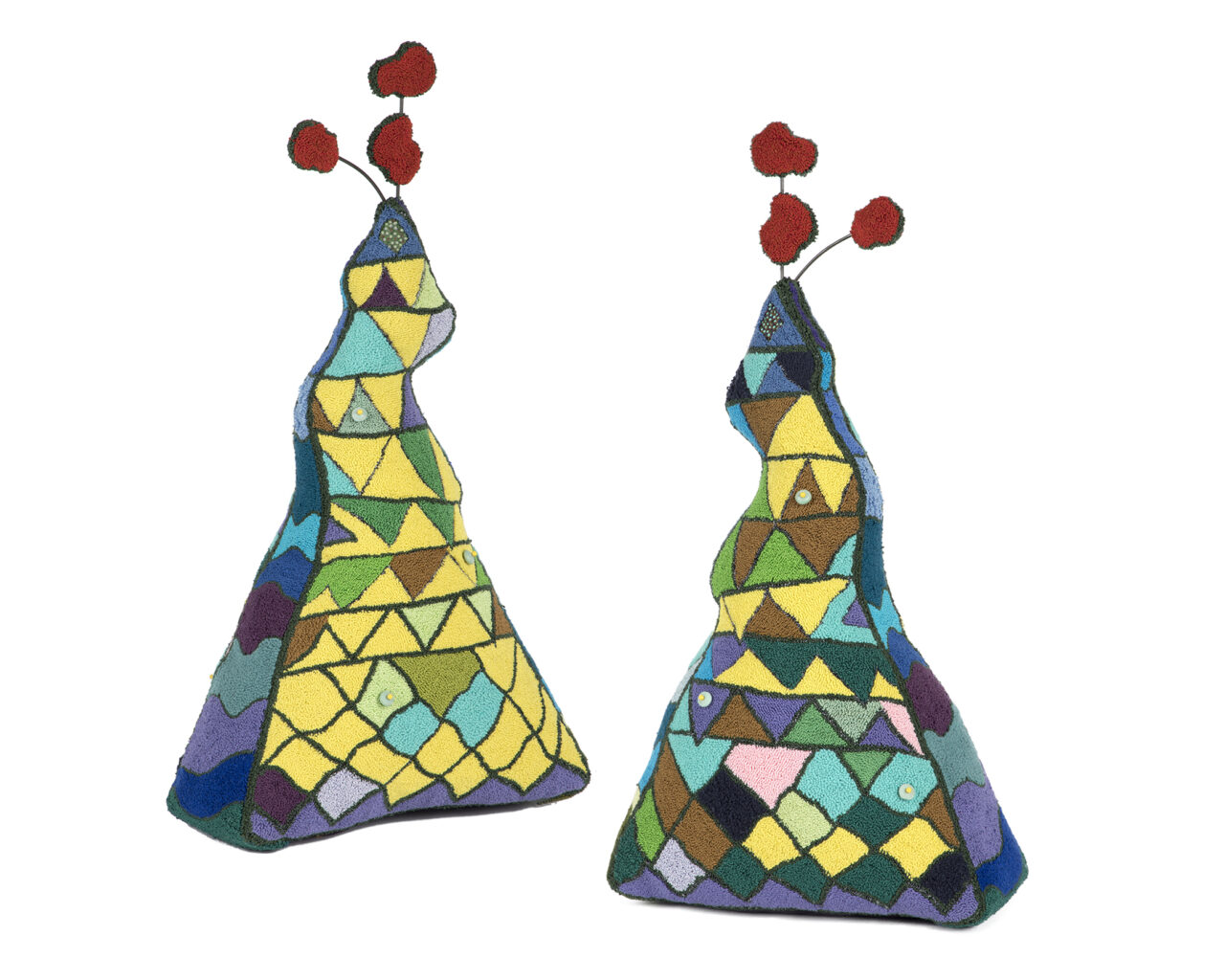
Mystical Mountain 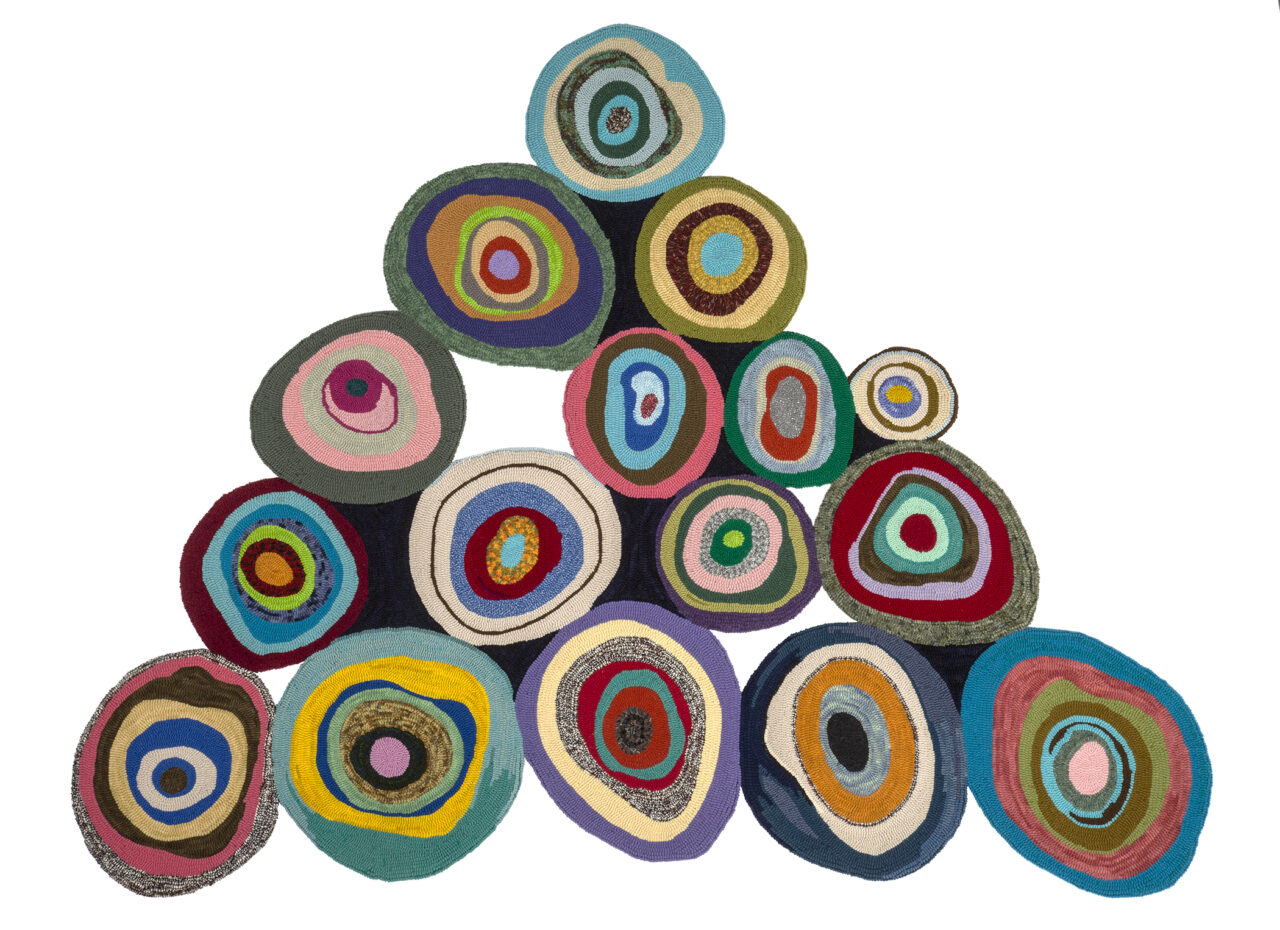
Sixteen Stories
Your pieces are so vibrant, where do you get your inspiration from?
The beauty and simplicity found in nature continues to inspire me. Memories of places I’ve been and things that I’ve seen spark my desire to record my thoughts and feelings in a visual way.
I find my mind often forms it’s own images, trying to capture the essence of how I feel in a particular place, and the surprise and elation I experience when encountering something unexpected, unusual or strikingly beautiful.
Although nature is my main source of inspiration, some of my pieces are purely explorations in colour. Others tell stories, reflect my views on life, or enable me to comment on issues that are important to me. Many of my pieces have an environmental message, and in the past few years I’ve found myself speaking out on political issues, as well as about health concerns such as Lyme Disease.
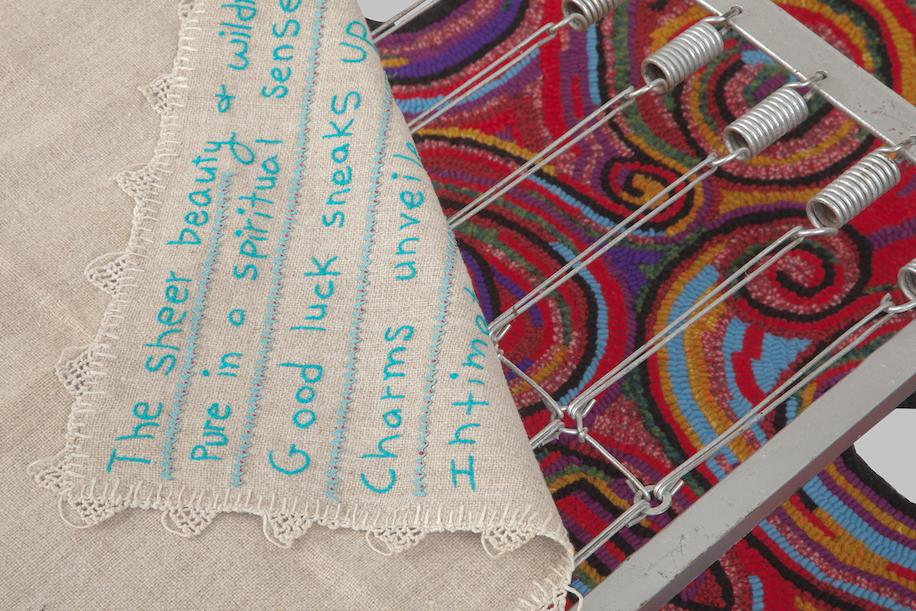
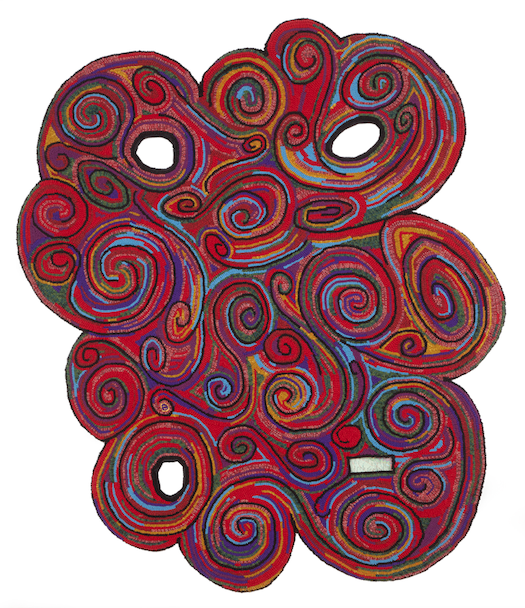
I Dream In Colour 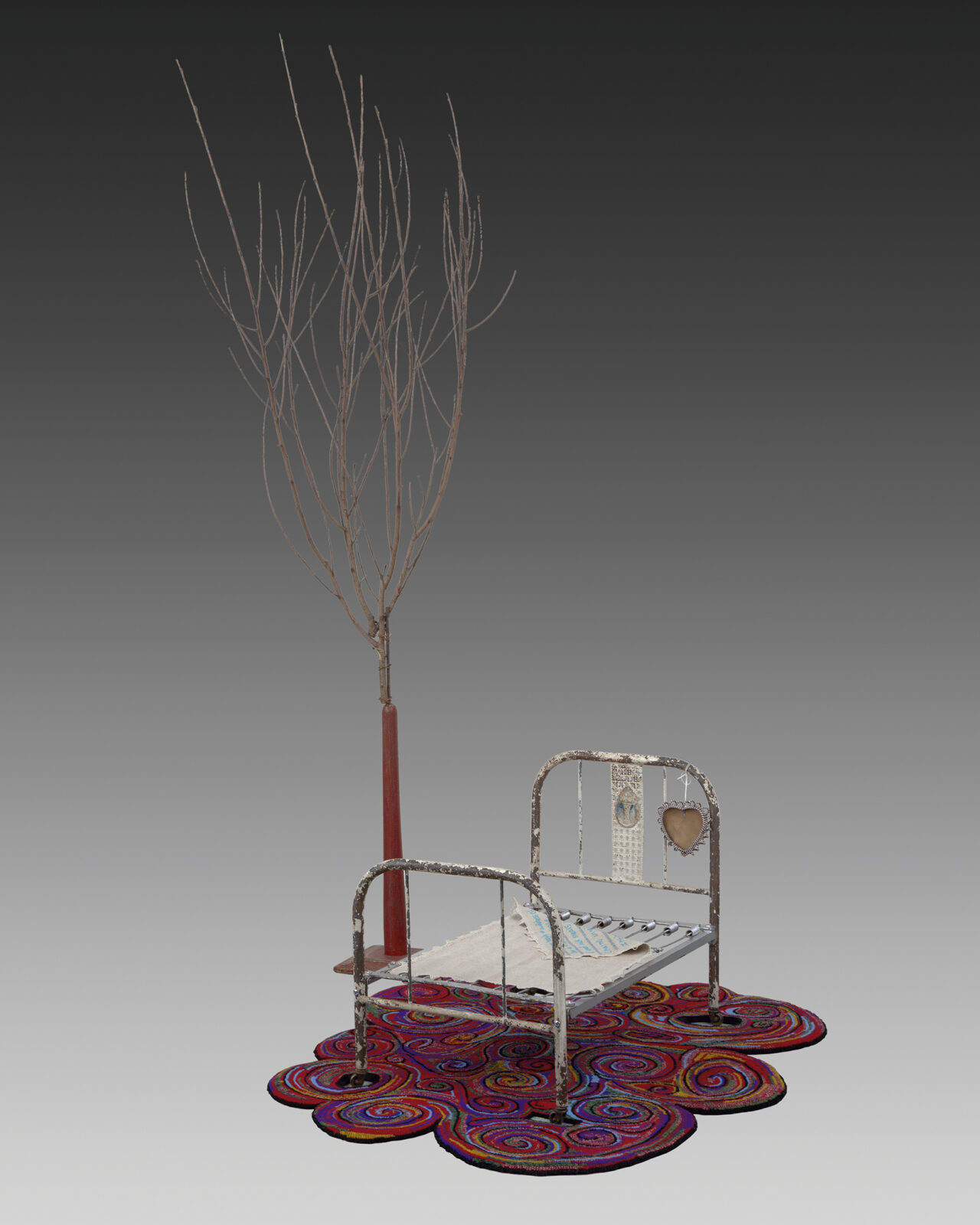
Can you tell us about your creative process, what steps do you take when starting a new project?
Before I start a new project I think about it for a long time. Most important to me is determining what I want to say, and deciding the best way to express myself. I gather ideas, contemplating size and colours, how it will be constructed, and what materials I will use. Having a clear idea in my mind helps me to make decisions while the work is in progress.
Once I feel ready to commit to paper, I work full size. In my most recent work I’ve been using a combination of technology (photographs I’ve taken and manipulated on the computer), and also drawing by hand. Once satisfied with the design, I gather my materials. If I determine I don’t have the colours I need, I head to the dye pot, and then I’m ready to begin!
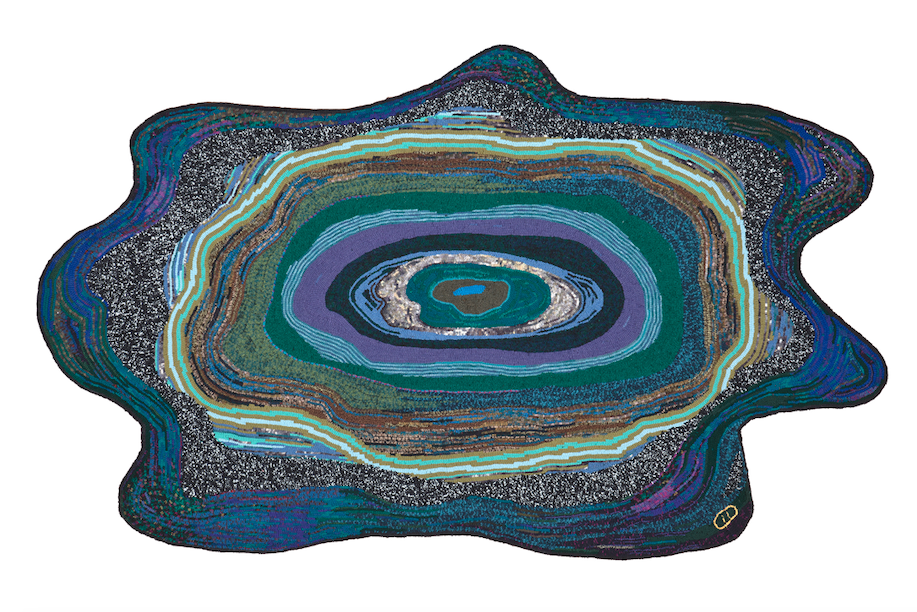
What textile techniques do you generally use within your pieces?
Over the years I have experimented with a wide variety of textile techniques. As I mentioned before, I’m always curious about how things are made, and occasionally will set out to learn a new technique that I find intriguing. Sometimes I’ll find one of these newly learned skills is suited to a current project. I do however have a few favourite techniques, and find myself combining these in various ways.
These are traditional rug hooking, punch needle embroidery, hand embroidery, hand appliqué and reverse appliqué.
Which other artists do you love? Are there any that inspire you, past or present?
There are many artists whose work I admire. My all time favourite artist is Alexander Calder. I love the simple, whimsical quality of his sculptures and jewellery. Some of the other artists I admire are Andy Goldsworthy and Patrick Dougherty working directly with nature, and Charles Burchfield, Emily Carr, and Lawren Harris for their animated depictions of nature.
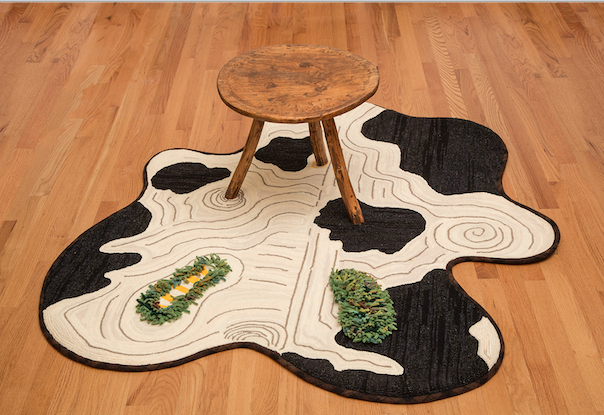
Don’t Let The Grass Grow Under Your Feet 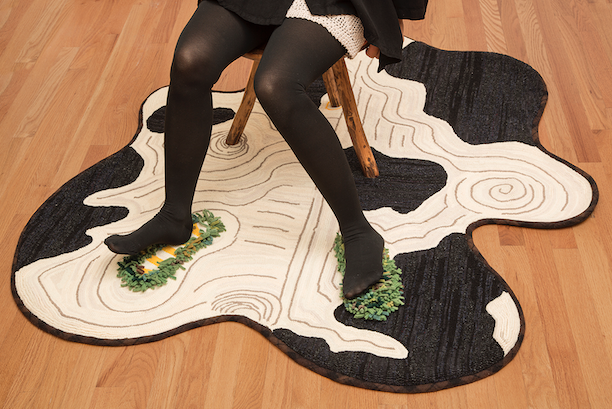
You seem to be a fellow lover of colour. Do you have any tips for choosing colour combinations?
Nature provides so many incredible and surprising combinations of colour. I carry a camera or phone everywhere I go and try and capture a bit of what I see.
What do you like most about working with textiles?
There are so many reasons that I’m drawn to working with textiles. I love the rich colours, textures, and patterns of cloth, and their associations with traditions, people and places that hold meaning for me. I seem to be drawn to working in repetitive techniques that I find meditative and relaxing. Most of these techniques are labor intensive and it’s not uncommon for my projects to take many months to complete. I feel a great deal of satisfaction and a huge sense of accomplishment when I pull the last loops or make the last few stitches when completing a long project.
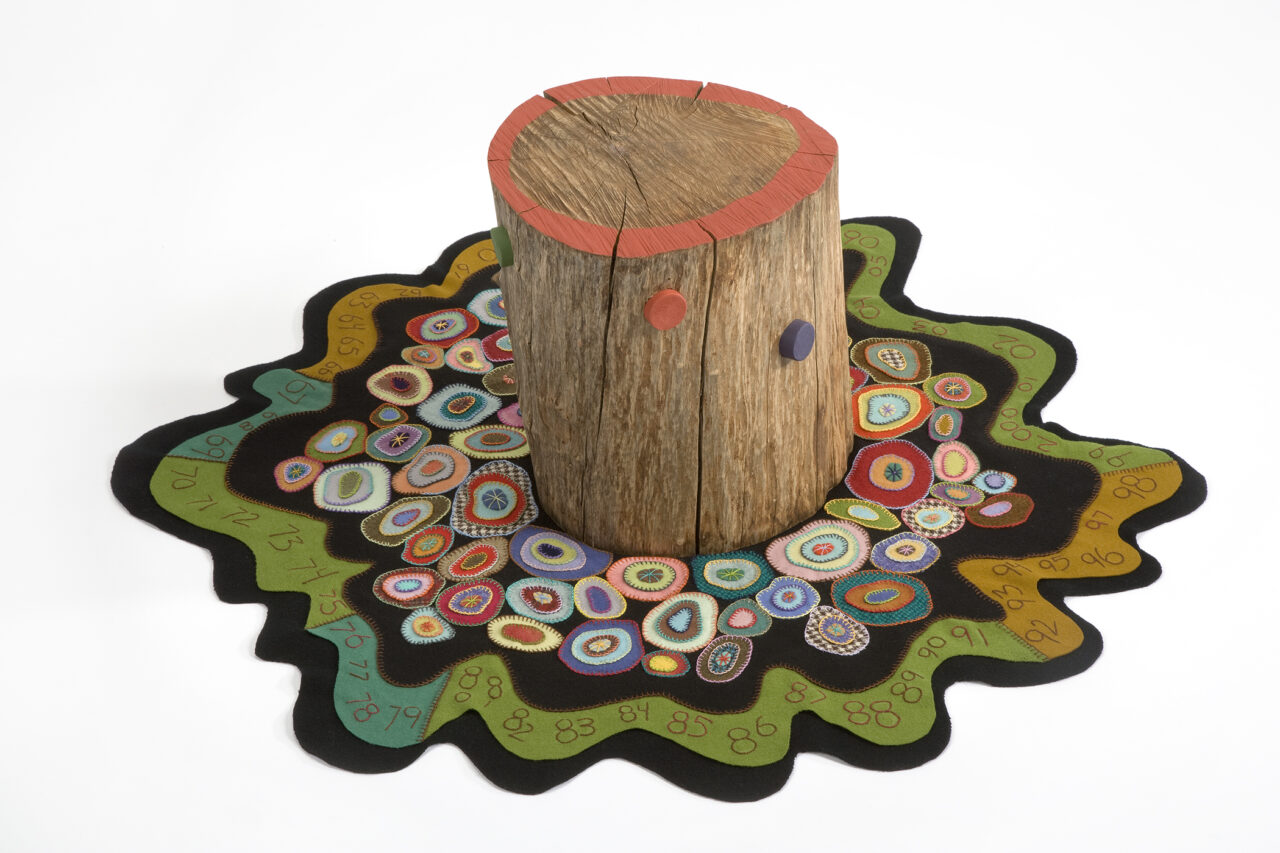
Tree Skirt Annual Rings 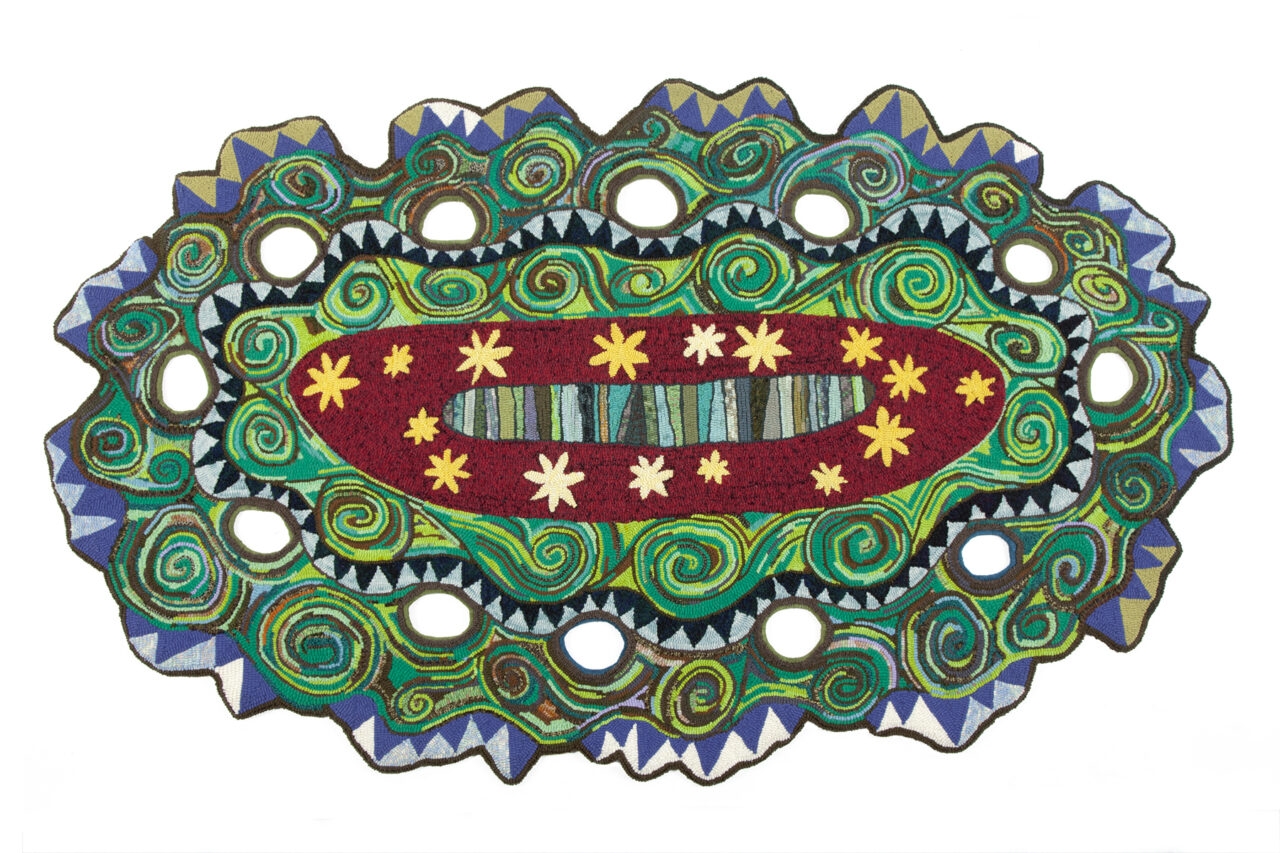
Early Spring- Fiddleheads and Flowers
What materials do you most commonly use within your pieces?
When I am creating work using the traditional rug hooking technique, I almost always use wool hooked in to a linen backing material. The wool is mostly recycled clothing and new white wool that I hand dye. Occasionally I will over dye the clothing as well. On occasion I will incorporate cotton, linen or novelty fabrics to create desired effects.
When embroidering by hand or using the technique of punch needle embroidery, I use a wide variety of threads- whatever will fit through my needle and won’t fray. I use cotton, silk, linen, rayon, wool, and metallic threads.
Have you ever experimented with any unconventional materials?
Over the years I have experimented with just about every material I could cut into strips and pull with a hook. These include, paper, plastic, shoelaces, balloons, stockings and tights, tee shirts, grass and weeds. Although I love the challenge and the opportunity to experiment, I keep coming back to the more stable and traditional materials of wool and linen because I love the way they look and feel.
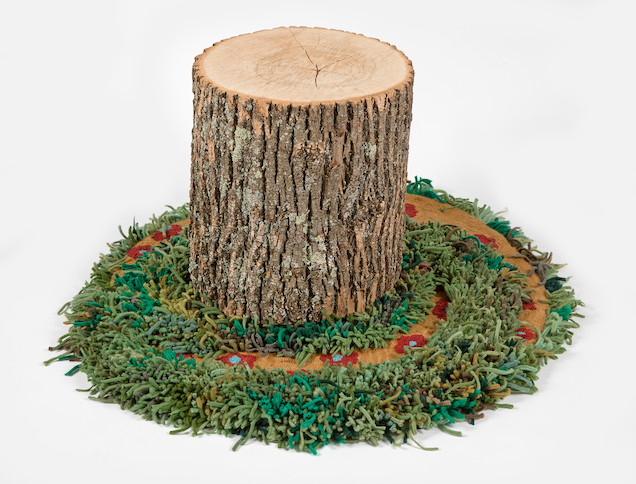
Inside Looking Out, Picnic 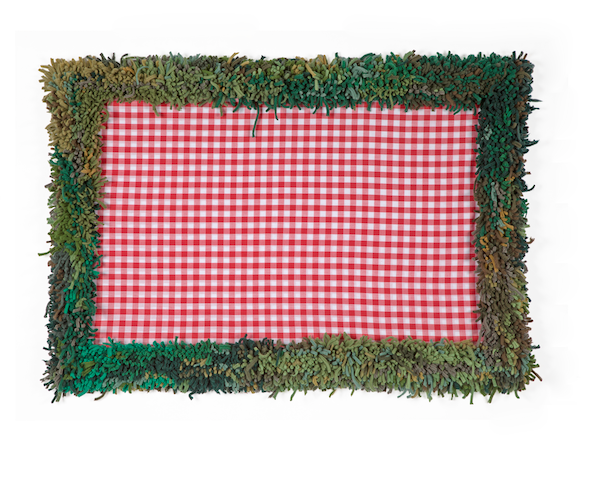
Do you have a favourite piece you’ve created so far?
My favourite pieces are usually whatever I have on exhibit, because it gives me a chance to see them in a different setting. I currently have three pieces on exhibit at the Katonah Museum of Art. They are examples of three different types of work I create.
Petoskey Stone: Memories of Michigan is an example of a hooked tapestry where I’m taking the technique of traditional rug hooking and trying to push the boundaries of the art form by cutting into it, and also creating an irregular edge. This piece was inspired by the pattern of the Petoskey stone, found along beaches in Michigan. The colours are those I saw in my travels. The piece acts as a souvenir of a teaching trip where I took my students out into nature for inspiration.
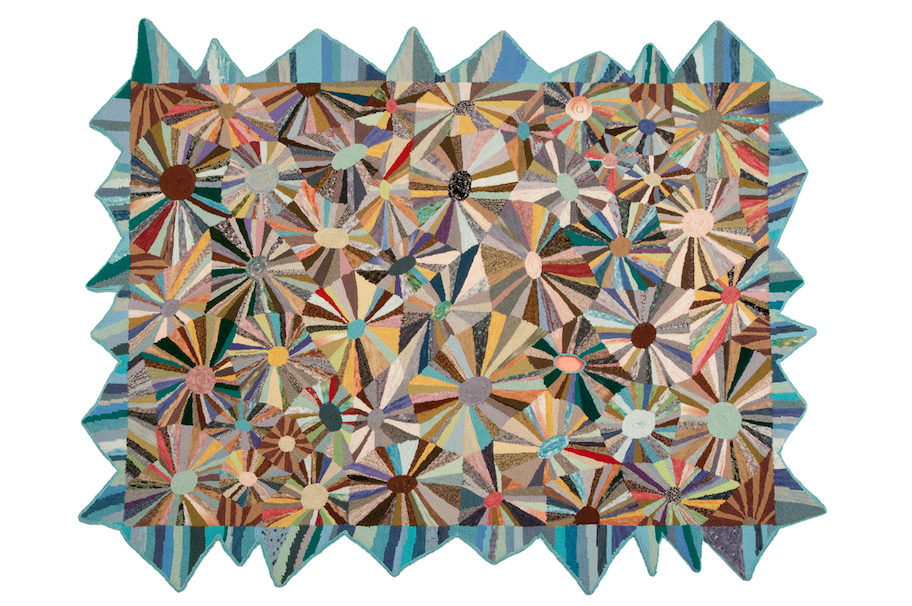
Sycamore Trees: The Human Connection has an environmental message, and draws parallels between man and nature. It is a mixed media installation combining hand hooked textiles with natural materials.
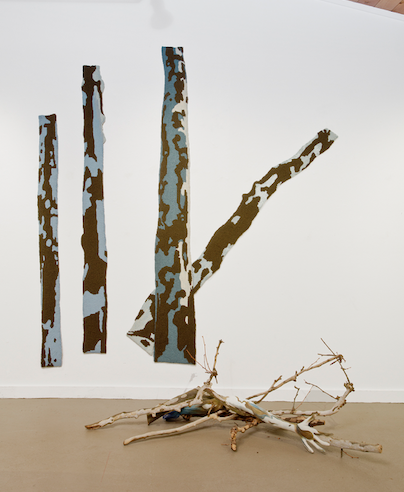
Twig Series: This group of seven framed pieces showcases items collected from nature that have been combined and joined together to create new objects. The pieces are meant to draw the viewer in for a closer look, fostering an appreciation of nature and of items overlooked in our everyday environments.
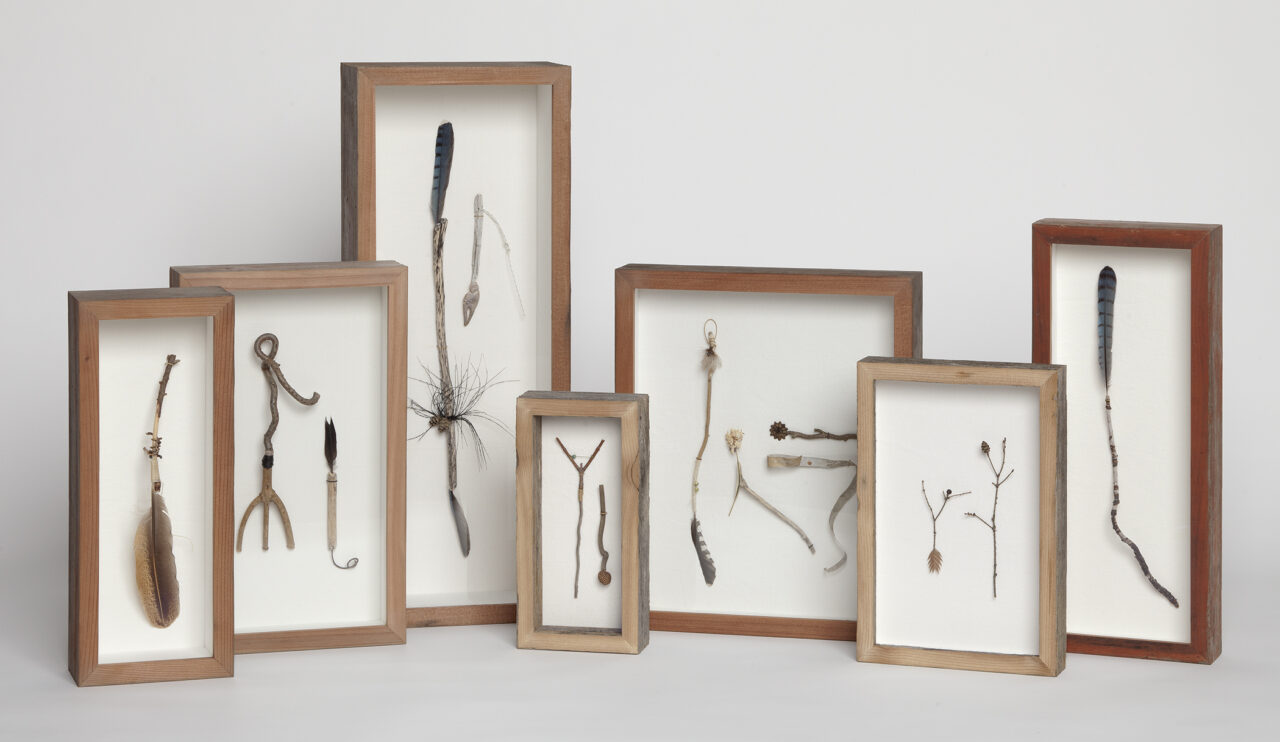
Speaking out:
In 20I6 I created an installation that I don’t necessarily consider a favourite piece, but I feel was important for me to create.
I.C.U.
This artwork was a response to the shooting that took place down the street from where I live at Sandy Hook Elementary School.
I created this piece before our 2016 election in the U.S, in anticipation of exhibiting at a large hooked rug show. I knew I would have multiple opportunities to speak about my work, and saw this as a chance to talk about how the shooting affected my community, and to speak out in favour of gun control.
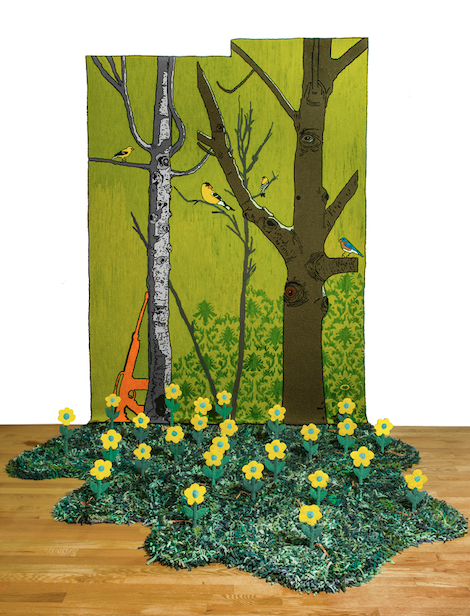
I.C.U 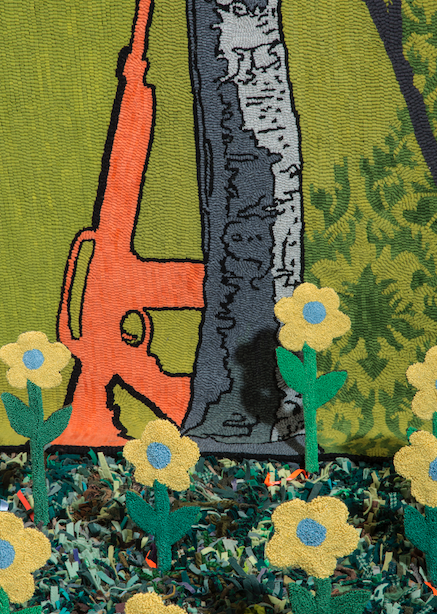
What are you currently working on? Are you able to share any ‘in-progress’ photos?
I am currently working on a series of larger than life hooked portraits of women I know and admire. The series is entitled Ordinary/ Extraordinary Women and honours the extraordinary achievements of women in the ordinary context of their lives. Background information about the project and some detail images can be found at (http://www.lizalpertfay.com/ordinary-extraordinary-women).
My online newsletter that comes out every other month shows these works in progress. Past newsletters can be viewed at (http://www.lizalpertfay.com/new-page-2.)
You can also find a few of these works in progress by visiting my Instagram page @lizalpertfay
My latest portrait in progress (number nine in the series) contains a list of interesting sayings I’ve compiled over the years from a friend who uses them in her everyday speech. In the photo I’m standing in front of one (of two) panels showing the scale of the works.
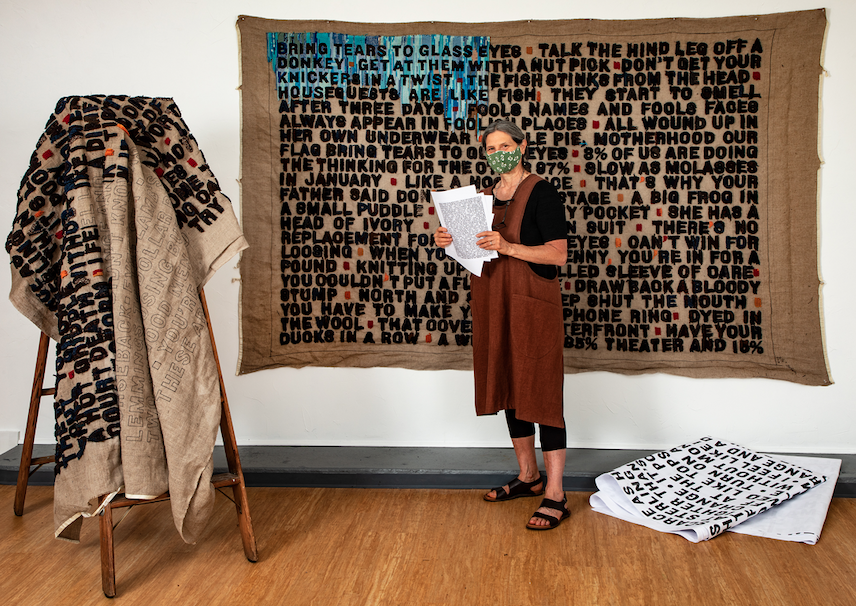
What’s next for you in terms of projects?
My mind is always racing and I will never run out of ideas. I have many more projects in my head than I will ever be able to realise. For now however, I’m concentrating on finishing all sixteen hooked portraits. This I hope to do in the next few years.
What advice would you give someone looking to get into textiles?
My advice to someone looking to get into textiles is to follow your heart, experiment, always challenge yourself, and don’t be afraid to occasionally fail.
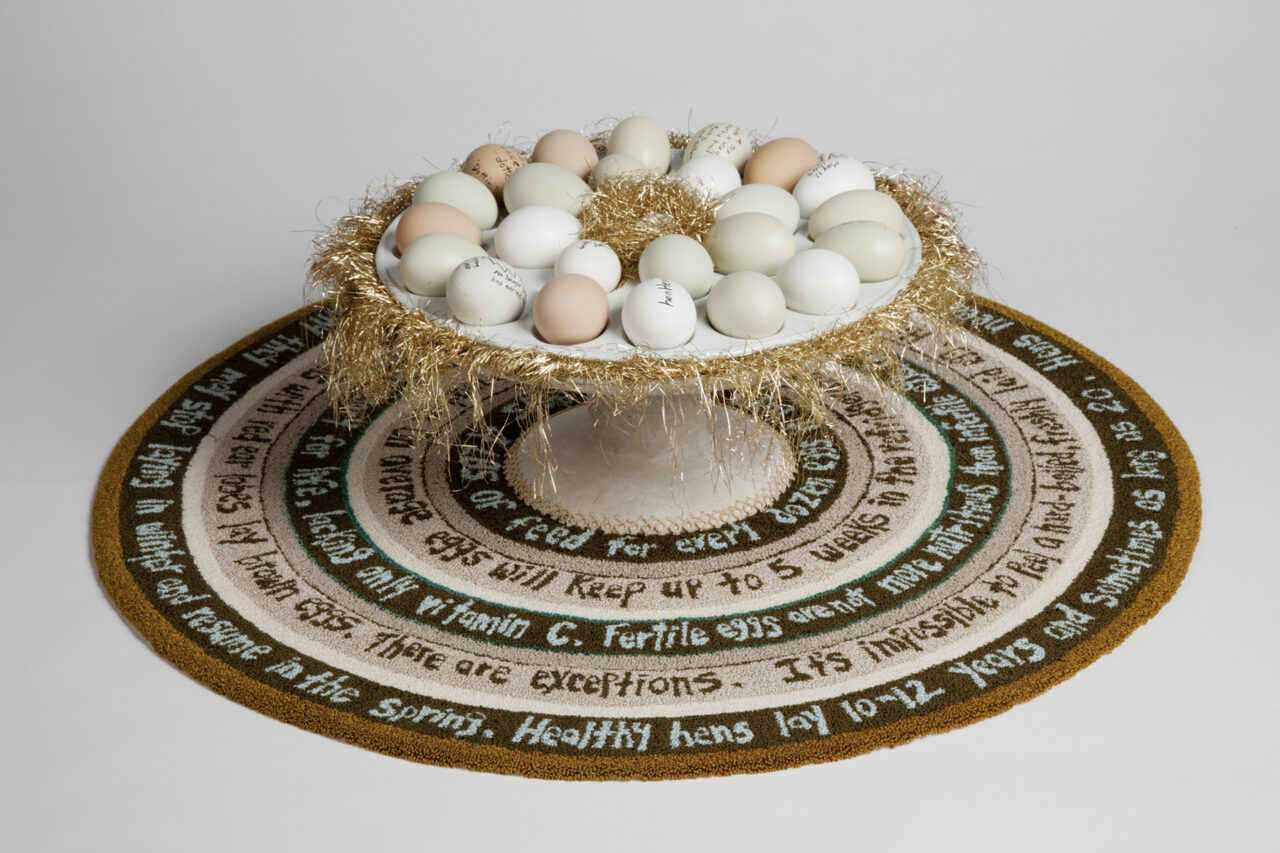
Five Fine Hens 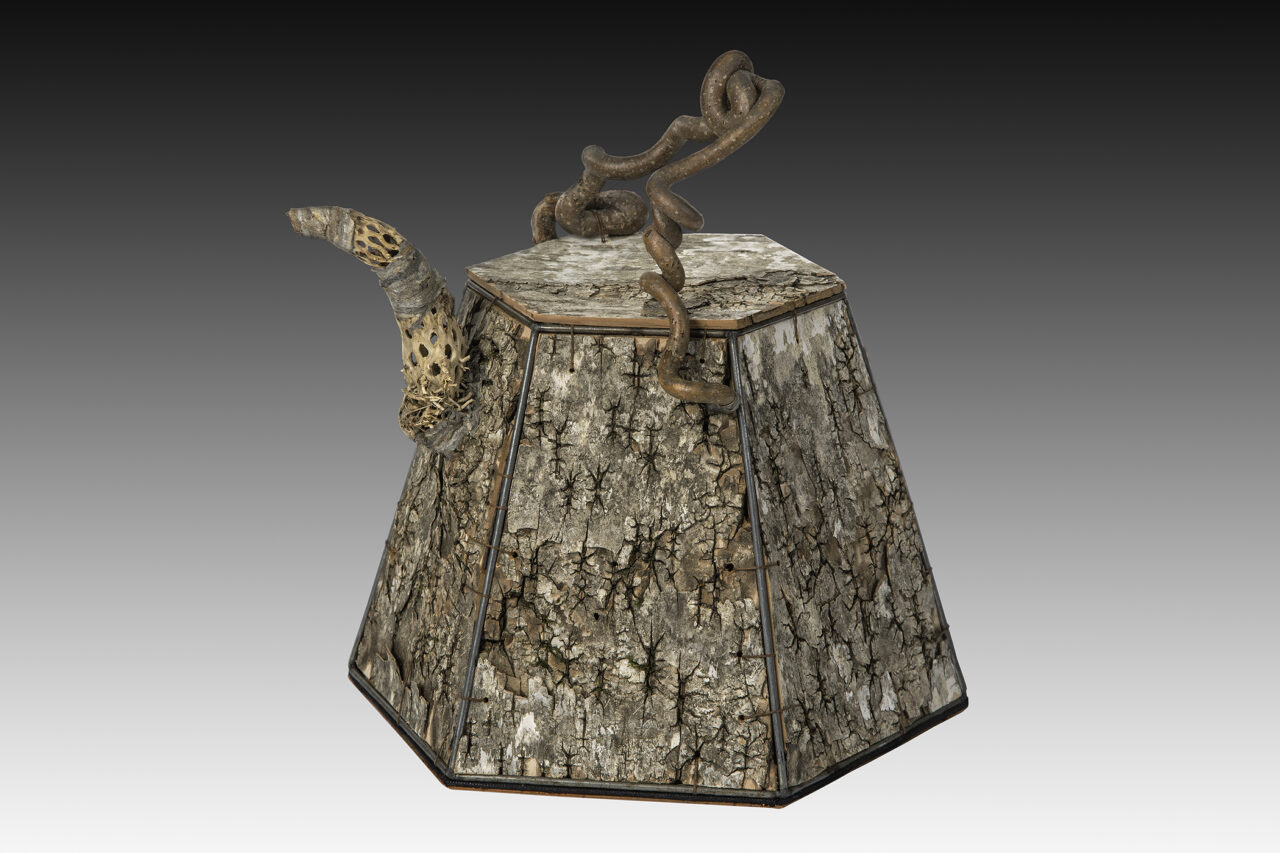
Bees in the Trees Teapot
We’re trying to be a bit more eco friendly. Do you have any tips or tricks to be more environmentally friendly in our day to day lives?
Our family is trying to cut way down on our use of plastic. For instance, we have varying sizes of reusable containers to store food. We also have a drying rack in the kitchen to wash and reuse plastic bags.
Where can people find out more about you and your work Liz Alpert Fay?
My work can be seen on my website at www.lizalpertfay.com, and also on Instagram @lizalpertfay .
Listings for exhibitions and also workshops I teach, are also listed here.
Thank you so much Liz Alpert Fay! It’s been great getting to know you! 🙂
If you’ve enjoyed our Q&A with Liz Alpert Fay and would like to be the first to see future Q&As with artists and rag ruggers, then why not join our Rag Rug Community on Facebook, follow us on Instagram or join our fortnightly newsletter here.
Or, for more textile work then why not check out the incredible work of another one of our Q&A victims, Stephanie Fradette here.

Check out our Q&A with Stephanie Fradette here.
OR CONNECT WITH US ON SOCIAL MEDIA AT:
Instagram: https://www.instagram.com/raggedlife/
Facebook: https://www.facebook.com/raggedliferagrugs/
Pinterest: https://www.pinterest.co.uk/raggedlife/
Twitter: https://twitter.com/raggedlife
As always, happy rag rugging!
Elspeth x
[…] Or, for more textile work then why not check out the incredible work of another one of our Q&A artists, Rebecca Holley here. […]
[…] Or, for more textile work then why not check out the incredible work of another one of our Q&A victims, Liz Alpert Fay here. […]